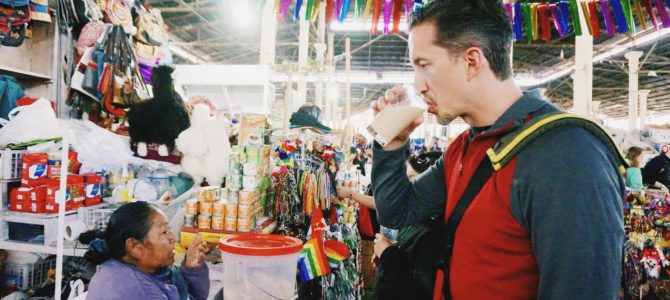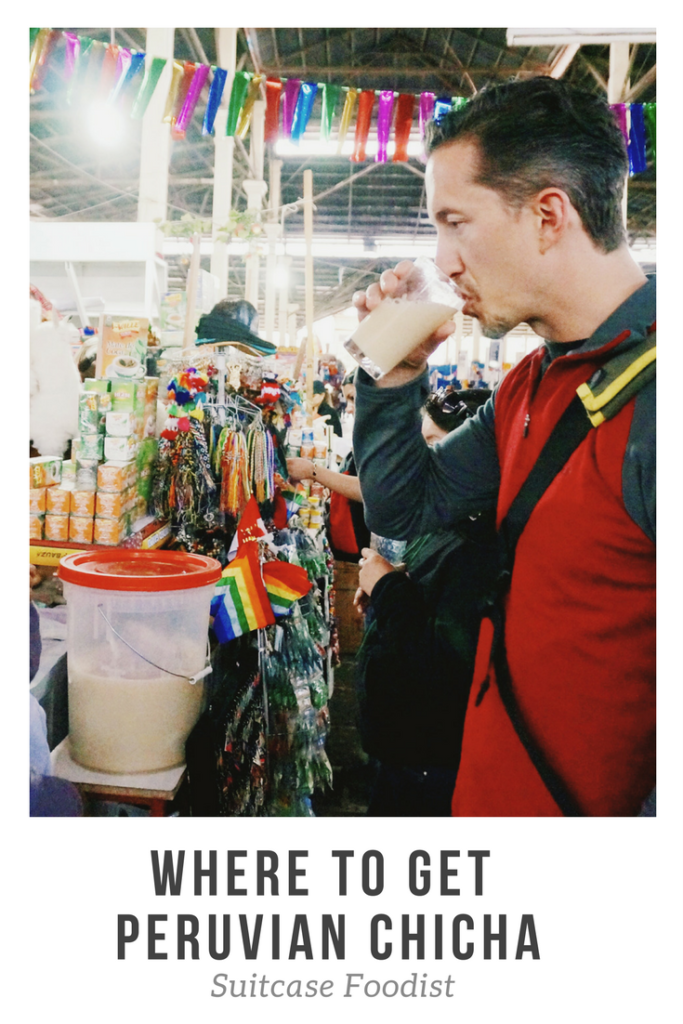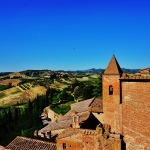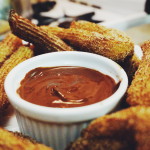This past year we spent some significant time in Peru – as part of our ‘we really should make a point of traveling more’ plan. I was already in love with Peruvian culture and food from the time I spent living in Miami and I’d had the opportunity to visit before. Greg really wanted the chance to see it together.
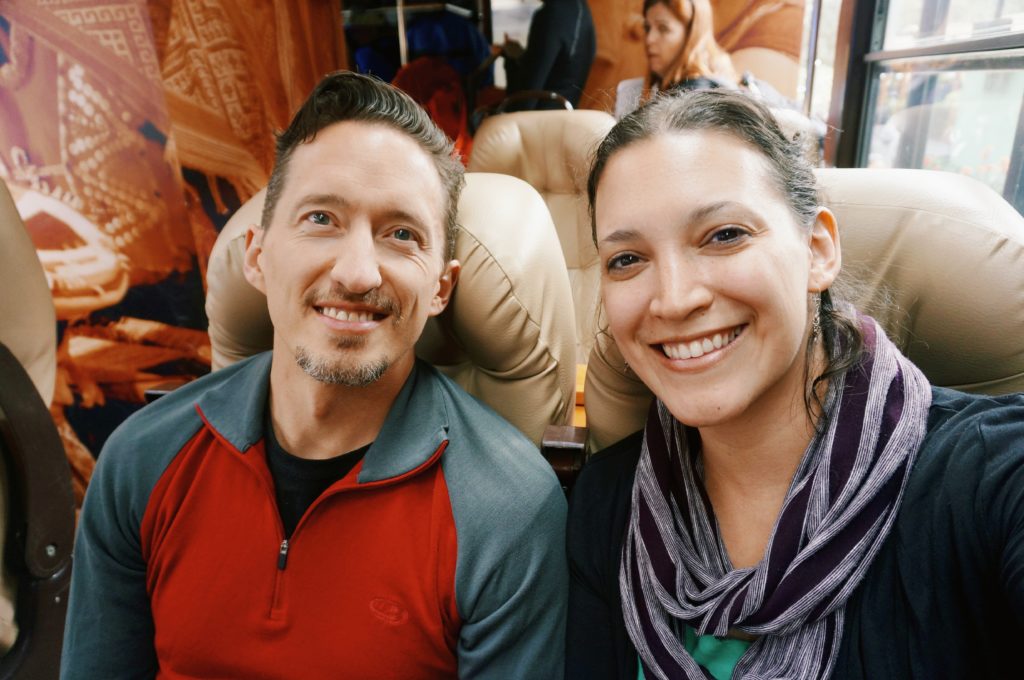
Here is how things generally go when we travel: I plan everything from travel to lodging to dates of when and where and why and how. I have a good sense of what I want to see and where I want to eat. I can’t help it – it’s event planner in me.
Greg on the other hand does some research and comes up 1 -2 things that are his ‘must dos.’ You know, the things that he would be disappointed to miss. From there, we build in a lot of down time – time to wander, cook, eat, get lost (sometimes literally), explore and discover.
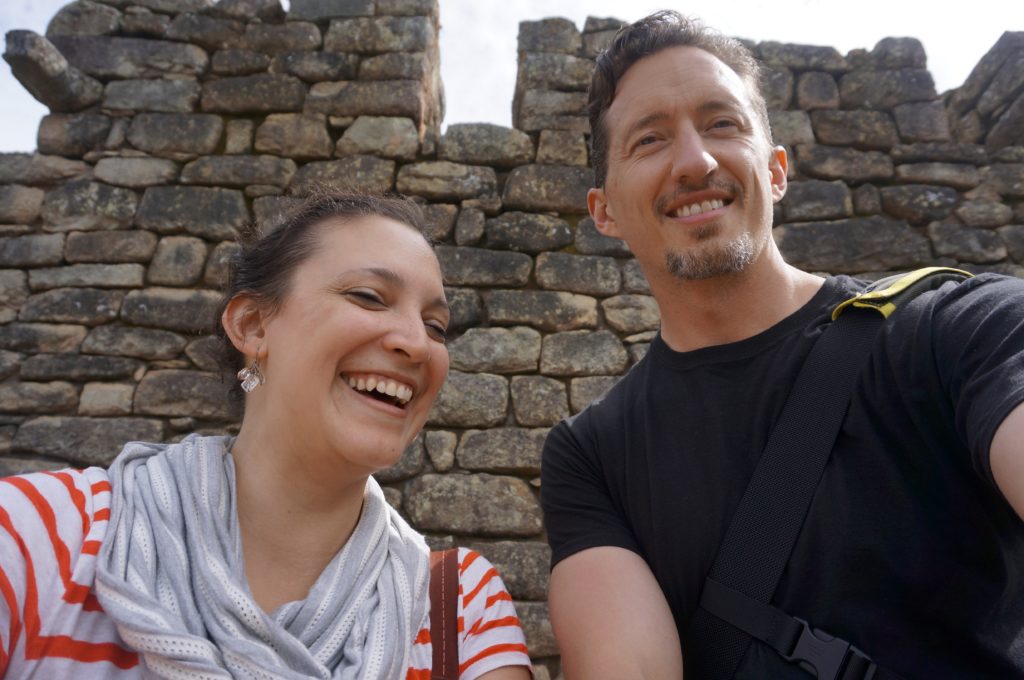
At Machu Picchu. Where apparently Greg said something hi-lari-ous
For our Peru trip, Greg had two requests: See Machu Picchu and try chicha – the traditional fermented Peruvian corn beer.
Disclosure: this is a cautionary tale of drinking fermented liquids in communal cups from public market stalls. But it really is a must for anyone traveling to Peru, so not to worry – I’ll cover the best way to try it minus the risk.
Chicha (sometimes called chicha de jora) is a mild fermented drink made from corn. The alcohol content is so low that it is often put in sippy cups for little kids, so don’t drink it expecting to get buzzed. We’re talking in the 1-3% range. Not to be confused with the well known Chicha Morada, which is a purple corn & fruit drink and not even remotely alcoholic.
Originally Chicha was made in the time honored tradition with virgin spit. Really. A designated group of women known as the Virgins of the Sun in ancient Incan culture owned the task of chewing corn, mixing it with their saliva and spitting the corn out to jump start the fermentation process. Because, as everyone knows, virgin spit is just better.
You’d be hard pressed to find spit fermented chicha out there now. These days the fermentation process generally starts with malted barley. It is fermented in large clay vats and comes out looking milky and off-white. It smells distinctly sweet. For me, it smells like a pot of water that you’d cooked corn in. The flavor lands between a sour beer (a sour wheat beer would be the closest) with an oddly a hyper-sweet boozy finish.
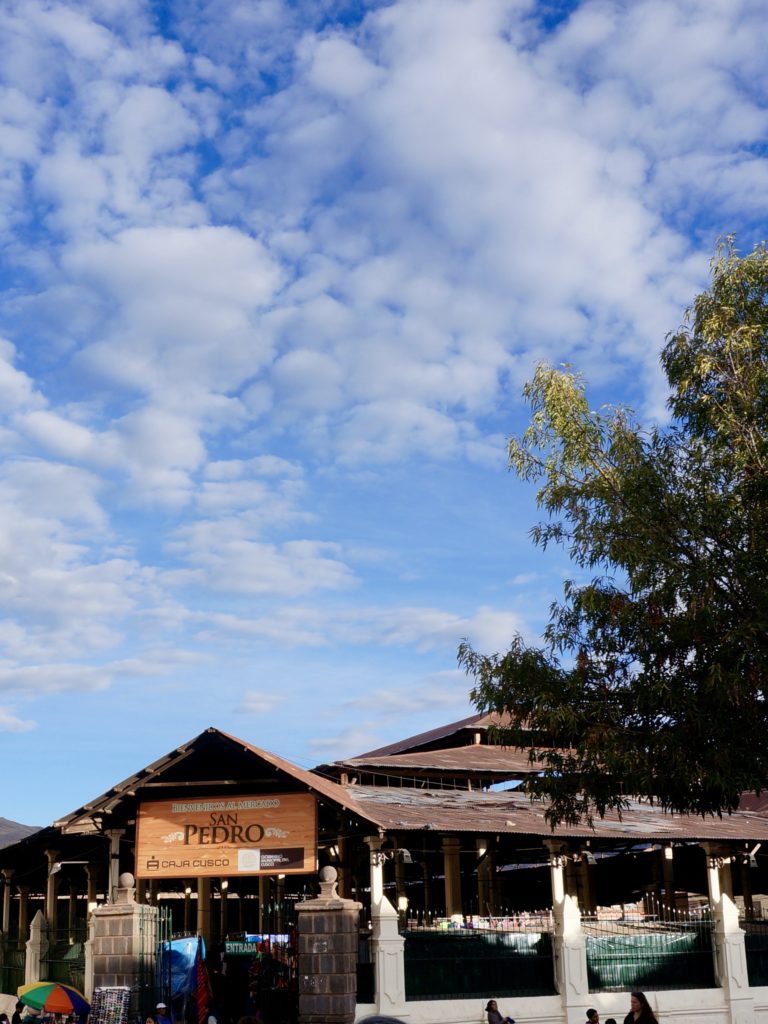
Mercado San Pedro in Cusco. One spot to pick up a glass of chicha. If you are a mix of very brave and have a stomach of steel
Chicha is sold just about everywhere in ‘chicherias’ – found in little back corners, covered patios or small roadside homes. You can easily spot a chicheria by a bamboo pole out in the front with a red flag or red plastic attached to the end. A large glass will set you back about the equivalent of about $.20 cents. Most of these places are small, tucked away and supplement the family income. And they are not regulated in any way. (Read: could make you sick)
There are also ‘chicherias’ or ‘picanterías’ that serve more as Peru’s version of a German beer hall. They have dedicated fermenting rooms and long communal tables and often serve traditional Peruvian fare like cuy (guinea pig) or alpaca to go along with the chicha. It was one of these spots that I first tried chicha my first trip. If you choose anywhere to try some… make it one of these joints.

Gearing up for the first sip…
When Greg tried chicha, we were in the famous Mercado San Pedro, which is the main market in Cusco. I’d offered to take him to one of the bigger chicherias, but he was not excited about climbing into a cab and dealing with the winding roads and crazy drivers. So as the official translator of the trip, I warily negotiated with a woman selling chicha from a large plastic vat in the market. After all, it was on his Peruvian bucket list.
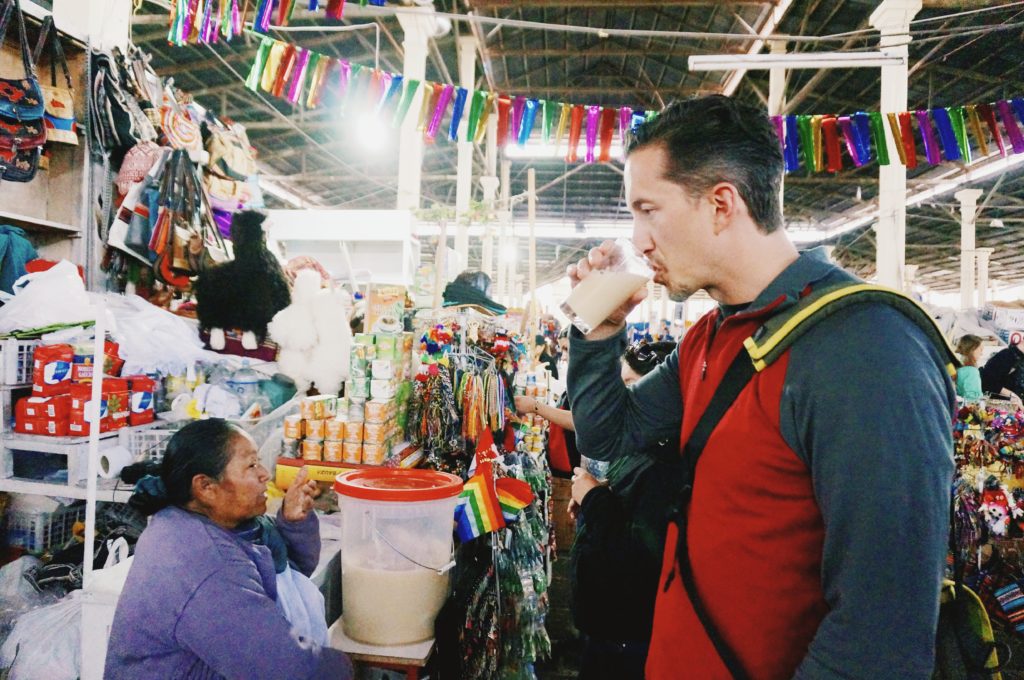
Much to the amusement of the locals, he got a big glass of it that he was expected to drink on the spot and then return. He also got a mild case of food poisoning. I blame the public market, the vat that had sat in the heat all day and the communal glass.
His verdict: “I would try it again.” Brave, brave man.

